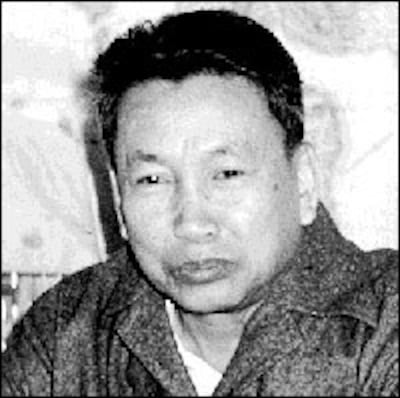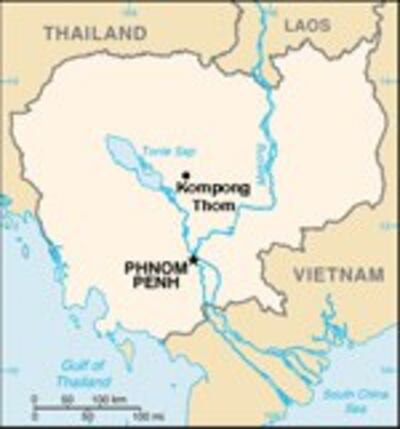Third in a series
PHNOM PENH, Cambodia

I interviewed a number of these refugees in early 1974. They were streaming by the thousands out of villages to the west of the provincial capital, Kompong Thom.
The Khmer Rouge lost their stranglehold on this “liberated area” after they threw many of their best troops into an offensive against the national capital, Phnom Penh. The Khmer Rouge leadership later decided that the loss of the area to the U.S.-backed Lon Nol government was a disaster.
But for me, it was a great opportunity. The refugees’ accounts brought the radical, usually faceless Khmer Rouge more sharply into focus than ever before.
A U.S. Army officer, on duty in Vietnam, told me my story in The Christian Science Monitor made him realize that a Khmer Rouge victory in Cambodia would mean a reign of terror for the Cambodian people.
According to the refugees, anyone who disagreed in any way with the Khmer Rouge’s control over their lives was taken away to be executed.
Dissenters or those accused of other crimes were taken from their homes and told that they were going to see “higher authorities.” They never returned.
In the first two years after the war began in 1970, the Khmer Rouge allowed some freedoms, the refugees said. But then the Cambodian communists introduced increasingly harsh controls.
Villagers particularly resented restrictions on religious practice. The Khmer Rouge put Buddhist monks to work in the fields, the refugees said.

By early 1974, a year before they captured Phnom Penh, the Khmer Rouge had grown strong enough to drop any pretense of loyalty to Prince Norodom Sihanouk, who was their coalition partner and nominal leader. Sihanouk was seen as a unifying figure, popular among the peasants. In the early stages of the war, the Khmer Rouge used the prince to recruit supporters.
It was obvious at this point that once they came to power, the Khmer Rouge would be brutal, even savage, rulers. But even today, their leaders and their ideology remain a mystery for many Cambodians. They were so radical that they took on too many enemies—including their old allies the Vietnamese communists.
Khmer Rouge secrecy hindered our understanding of a faceless collective leadership. Throughout the war years and even for months after the Khmer Rouge took power, their top leaders refused to admit that they were part of a communist organization.
And little was known even by rank-and-file Khmers Rouges themselves about the communist party leader, Pol Pot, whose real name was Saloth Sar. He was often referred to as “Brother Number One.”
According to author Philip Short, Pol Pot and his colleagues decided in May 1975 to create something more radical than even Stalin and Mao could have imagined. Their goal, says Short, was to build “a slave state, the first in modern times.”

By the time the Vietnamese communists decided to smash the Khmer Rouge in 1979, the Cambodian communists were divided among themselves and fairly easy to defeat.
Still, their ideas, their paranoia, and their treatment of their own people leave Cambodians much to ponder.
“Why?” asked Leng Maly, a research specialist on the Khmer Rouge who currently works for Radio Free Asia. “Why did they have to kill so many?”
As a boy, Leng Maly did hard labor under the Khmer Rouge. He and his two sisters were kept separated from their father and mother. His father, who was in the same “cooperative” or labor camp with the entire family was dying of starvation.
Leng Maly’s request to see his father before he died was rejected by the Khmer Rouge. His nine-year-old sister, weakened by malnutrition, somehow managed to crawl to her father’s side before his death.
“She came back and told me about his death,” Leng Maly said. “About a month later, she and my other sister died. Finally, only my mother and I survived the Khmer Rouge regime.”
Surviving Khmer Rouge leaders are of little help in trying to explain such cruelty. Each denies that he knew anything about the starvation or the killing of as many as 2 million Cambodians. Each blames other leaders for the four-year reign of terror that followed the Khmer Rouge capture of Phnom Penh on April 17, 1975.
